12 January 2018
Friday folds: Hayden Butte (“A Mountain”), Tempe
Posted by Callan Bentley
In keeping with the Arizonarific theme of this week’s posts (thanks to my participation in the 2018 Structural Geology and Tectonics Forum), I thought I would wrap up my ‘geology of the Phoenix area‘ posts with a walk I took on my last day there. This was to what Google Maps calls “Hayden Butte,” but the locals call “A Mountain.” Not “a mountain,” but “the mountain called ‘A‘.” It has a big white “A” on its south side. It’s adjacent to the stadium where the ASU Sun Devils play, and on the other side is the vibrant Mill Street corridor, the beating heart of Tempe.
Here’s a view from the north, to emphasize the big-picture geology of the butte:
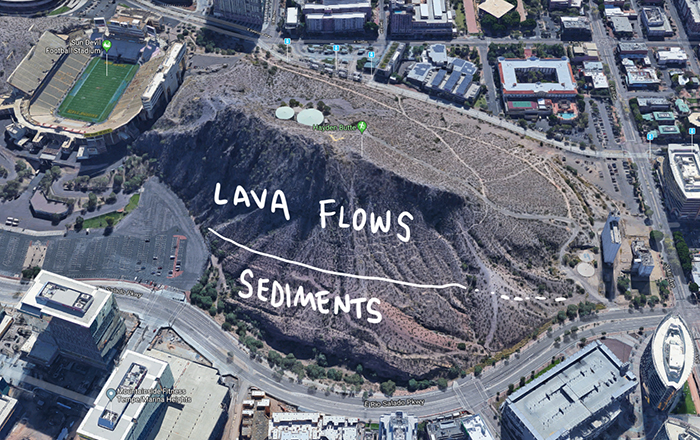
Most of the peak is made of lava flows with an andesitic composition. But these overlie Neogene sedimentary rocks. Both are interesting.
I began my visit there by summiting the butte. The trail is heavily used, which is great, but severely eroded, which is not so great. The views were nice – though it’s essentially an urban vista.
The rocks were fairly unextraordinary, porphyritic to aphanitic in texture, gray in color. They are apparently 18 million years old. I did spot a couple of small light-colored xenoliths, including this one:
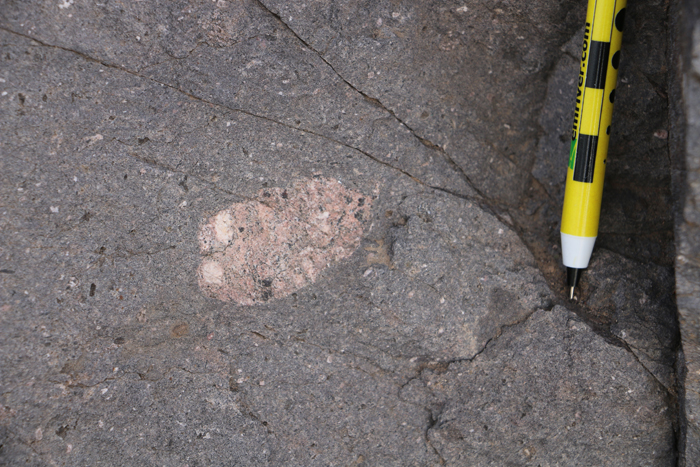
I also spotted an interesting set of deflected fractures, resembling a kink fold:
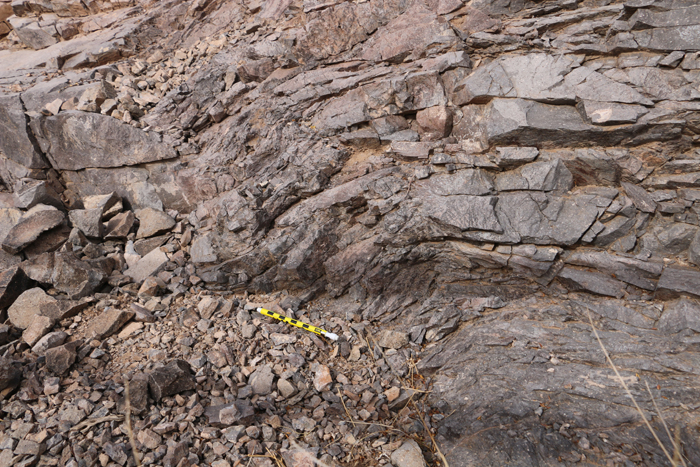
Annotated copy, with the trace of fractures highlighted in white:
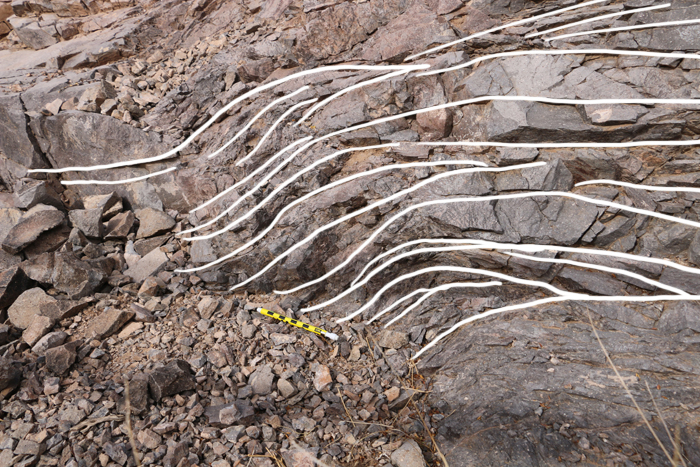
Given that these lavas flowed on Earth’s surface less than 20 million years ago, it seems unlikely that they have been subjected to compressional stresses at the brittle-ductile transition in order to kink. So I suspect this is just a visual match, a coincidence of form which isn’t really a kink band. That said, the fractures exist. Fractures form when stresses exceed the brittle strength of materials, so there could well be an interesting story to be extracted from these rocks.
I made a 3D model of this outcrop, which helps to convey the shape of these “kinked” fractures:
Then I walked clockwise around the butte, and found the sedimentary rocks. These were much finer than the coarse landslide breccias at Papago Park. Instead it was mudrocks and sandstones. One thing that was superlative about the site is some boffo soft sediment deformation: certain beds with high degrees of internal contortion.
The first glimpse was relatively symmetrical and open in its folding:
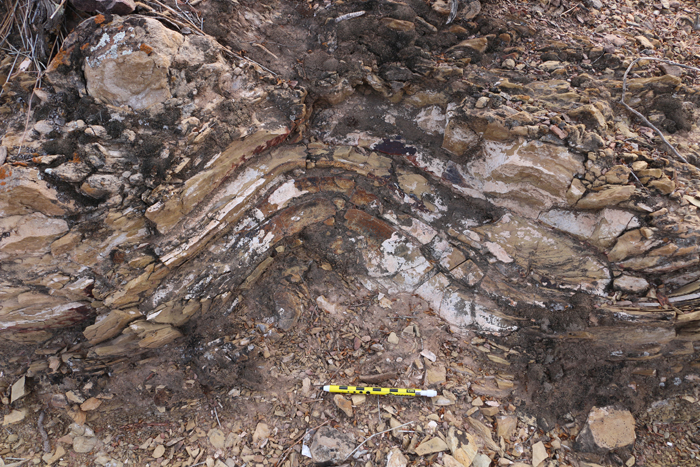
… But then things got more intense:
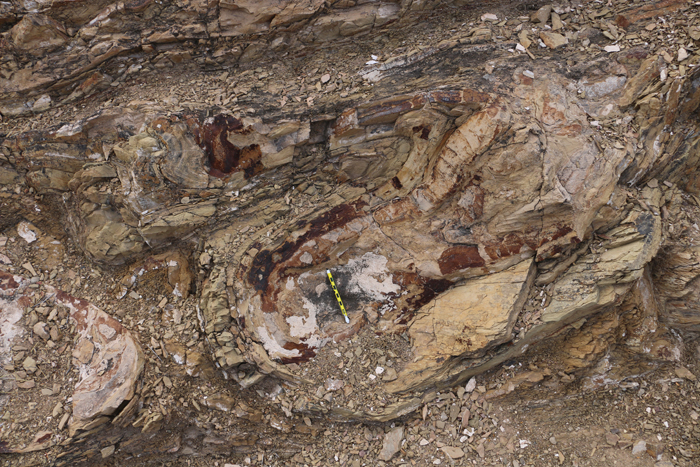
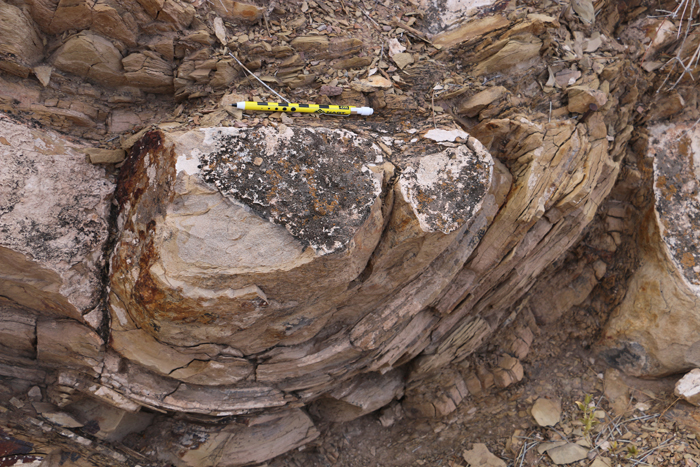
This is the signature of a density inversion – a deposition of wet sand on top of squishy mud. The sand then sags downward into the mud as big lobes, and to accomodate this relative motion, the low-viscosity mud squootches upward in flame-like projections.

Any thin sand layers within a larger body of mud get dragged along for the ride, acting as nice strain markers.
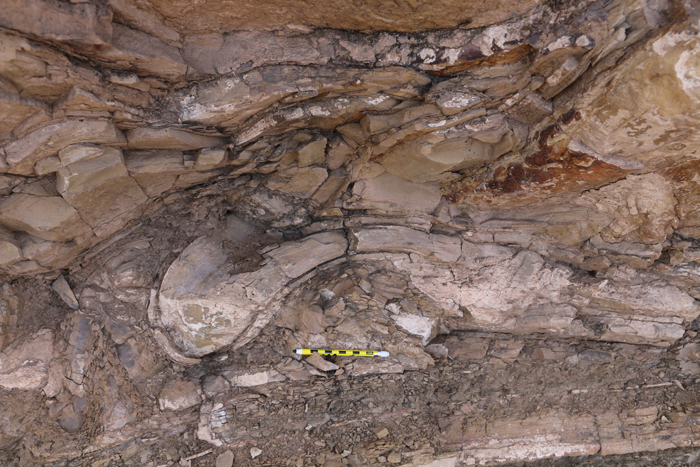
I saw one nice example of graded bedding:
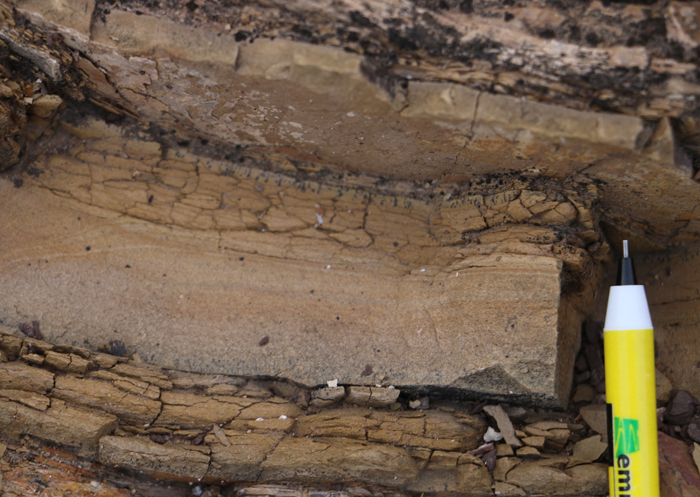
More soft sediment deformation:
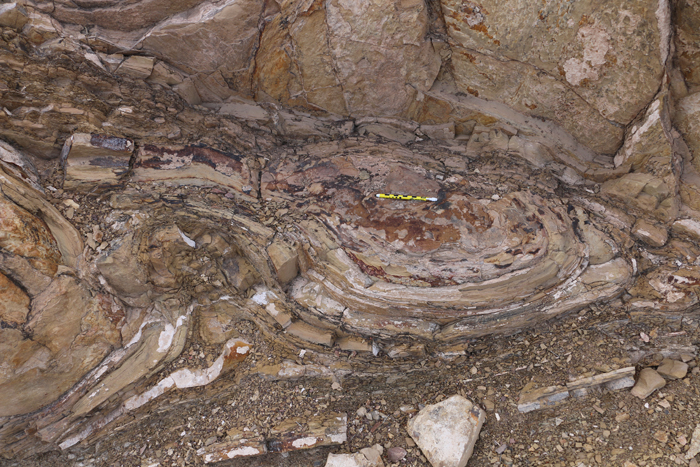
In spite of the hematite ± calcite on joint faces that transect the folded sandstone layers, I found the form of this fold to be quite exquisite:
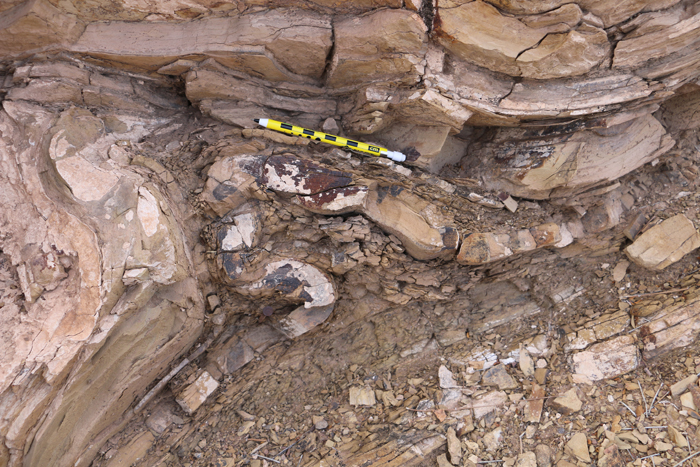
Here, I annotated it for you:
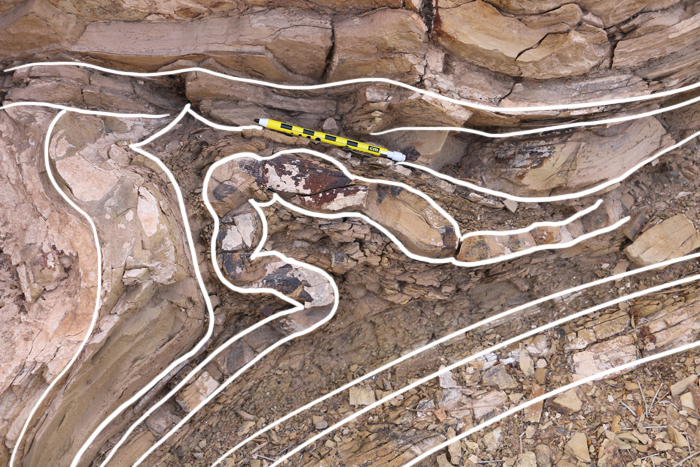
…And here are 3D models of two examples of the soft sediment deforomation weathering out of the butte:
I think there’s more to be seen on this mountain, but I wish I’d brought another person with me. I encountered some sketchy characters in some of the gullies draining the peak, and I think it would have been wiser to have a bigger group than just one. I’d caution anyone else thinking of visiting to bring along some friends. Maybe a trash bag for collecting litter would also be a good idea!
Anyhow, this mountain is a real treasure to have so close to campus. I wish I could take my students on a short field trip to a place like this. I guess with this set of photos and 3D models, I can at least give them a taste of it.


 Callan Bentley is Associate Professor of Geology at Piedmont Virginia Community College in Charlottesville, Virginia. He is a Fellow of the Geological Society of America. For his work on this blog, the National Association of Geoscience Teachers recognized him with the James Shea Award. He has also won the Outstanding Faculty Award from the State Council on Higher Education in Virginia, and the Biggs Award for Excellence in Geoscience Teaching from the Geoscience Education Division of the Geological Society of America. In previous years, Callan served as a contributing editor at EARTH magazine, President of the Geological Society of Washington and President the Geo2YC division of NAGT.
Callan Bentley is Associate Professor of Geology at Piedmont Virginia Community College in Charlottesville, Virginia. He is a Fellow of the Geological Society of America. For his work on this blog, the National Association of Geoscience Teachers recognized him with the James Shea Award. He has also won the Outstanding Faculty Award from the State Council on Higher Education in Virginia, and the Biggs Award for Excellence in Geoscience Teaching from the Geoscience Education Division of the Geological Society of America. In previous years, Callan served as a contributing editor at EARTH magazine, President of the Geological Society of Washington and President the Geo2YC division of NAGT.
Sounds like you missed the awesome mudcracks at the base!
Yeah, after I saw two homeless guys shooting up in one of the gullies on the slopes, I didn’t want to head down into those trees where I couldn’t see what (like mud cracks!) or who (people who might want to take my big expensive camera from me) might be in there. This is the downside of exploring new terrain alone.
Next time you’re here we’ll show you those mudcracks and the copper prospect upslope at the base of the lava flow.
Like, for example, September 2019! https://www.geosociety.org/GSA/Events/Annual_Meeting/GSA/Events/gsa2019.aspx
Fear not! Everything you see is not as you would suspect or deduce! The geology, on the other hand, is. Nice interpretation and, for future reference, never interfere with ones natural instincts to explore……even in uncharted water. Alone or in groups!
Aloha from Arizona
Interesting posts on Tempe and Papago
If ya come back
You should check out the Salt River Bed
OK; thanks!